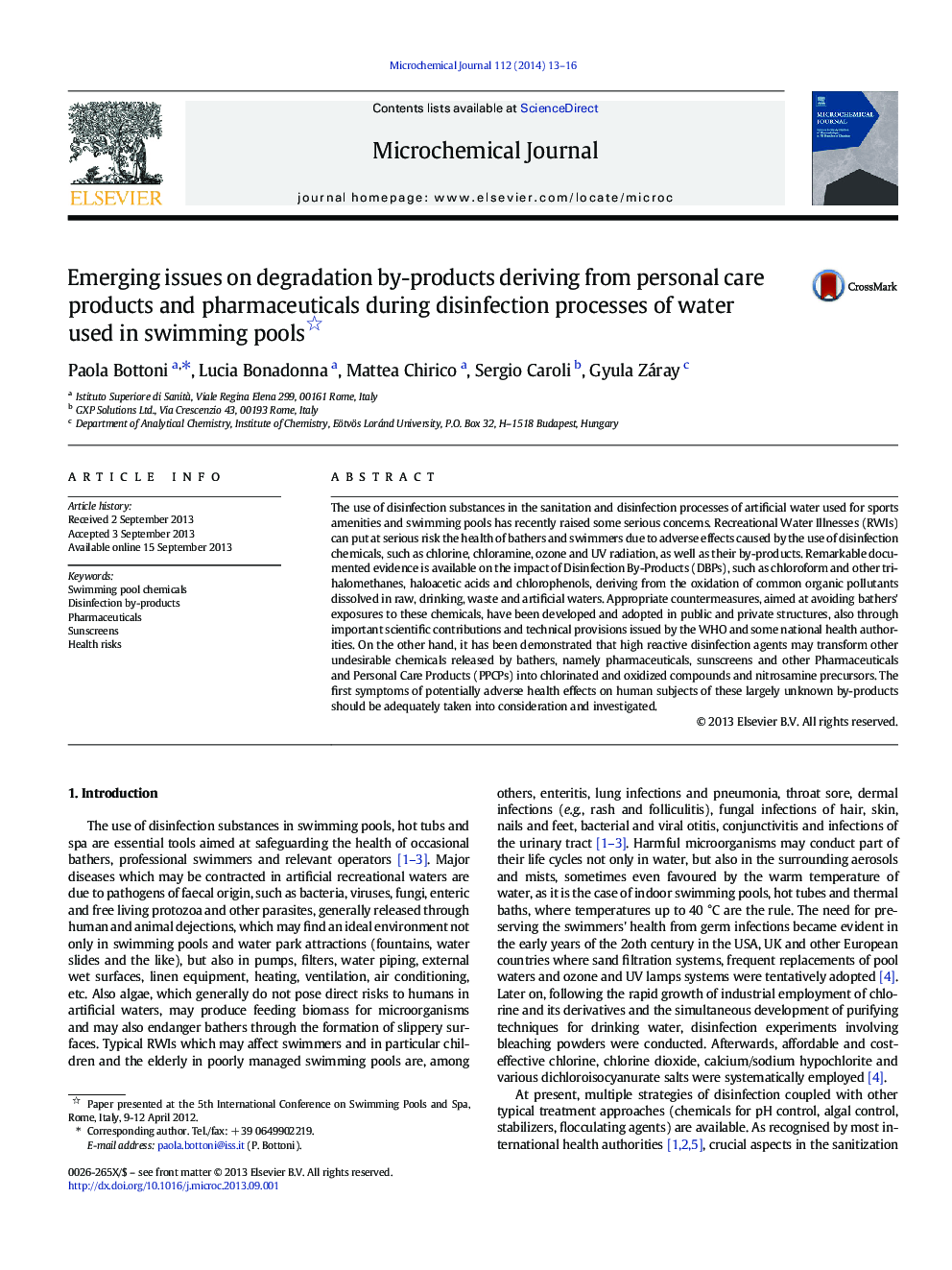| Article ID | Journal | Published Year | Pages | File Type |
|---|---|---|---|---|
| 7643272 | Microchemical Journal | 2014 | 4 Pages |
Abstract
The use of disinfection substances in the sanitation and disinfection processes of artificial water used for sports amenities and swimming pools has recently raised some serious concerns. Recreational Water Illnesses (RWIs) can put at serious risk the health of bathers and swimmers due to adverse effects caused by the use of disinfection chemicals, such as chlorine, chloramine, ozone and UV radiation, as well as their by-products. Remarkable documented evidence is available on the impact of Disinfection By-Products (DBPs), such as chloroform and other trihalomethanes, haloacetic acids and chlorophenols, deriving from the oxidation of common organic pollutants dissolved in raw, drinking, waste and artificial waters. Appropriate countermeasures, aimed at avoiding bathers' exposures to these chemicals, have been developed and adopted in public and private structures, also through important scientific contributions and technical provisions issued by the WHO and some national health authorities. On the other hand, it has been demonstrated that high reactive disinfection agents may transform other undesirable chemicals released by bathers, namely pharmaceuticals, sunscreens and other Pharmaceuticals and Personal Care Products (PPCPs) into chlorinated and oxidized compounds and nitrosamine precursors. The first symptoms of potentially adverse health effects on human subjects of these largely unknown by-products should be adequately taken into consideration and investigated.
Related Topics
Physical Sciences and Engineering
Chemistry
Analytical Chemistry
Authors
Paola Bottoni, Lucia Bonadonna, Mattea Chirico, Sergio Caroli, Gyula Záray,
